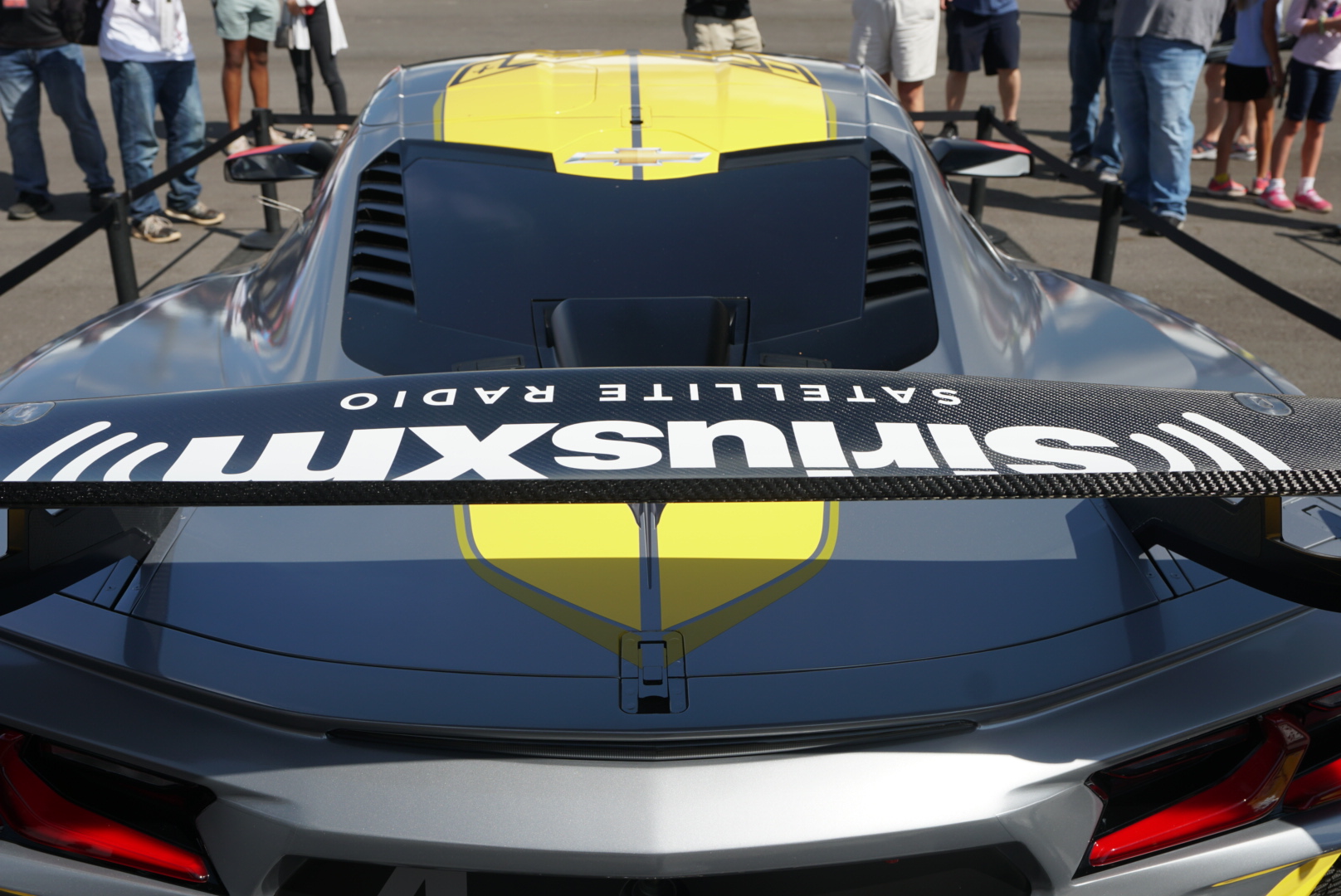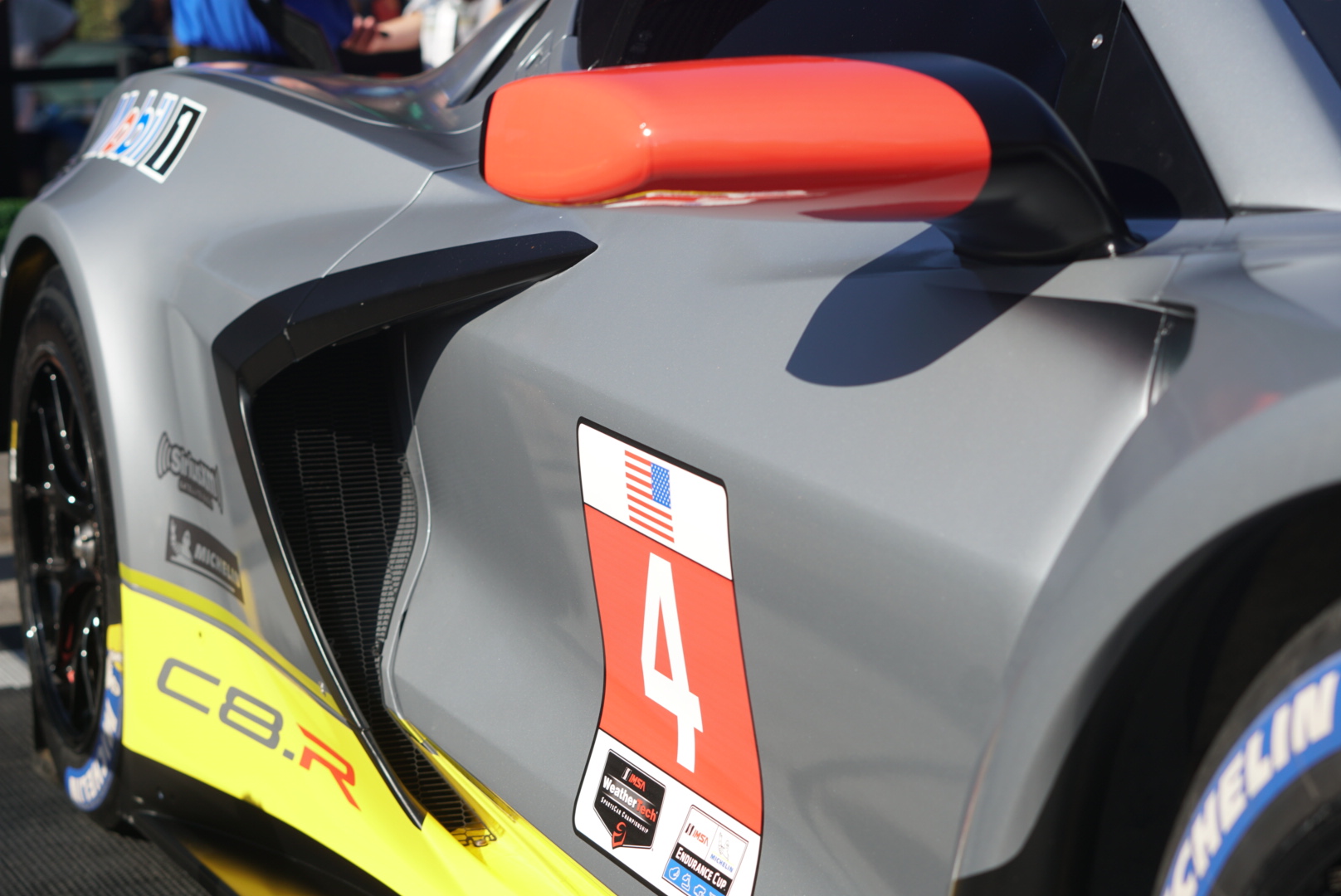Media | Articles
6 things you didn’t notice about the Corvette C8.R
No matter which Corvette C8.R livery you prefer, the car’s menacing stance, high-flying rear wing, and mid-engine proportions dominate your first impressions of Corvette Racing’s newest representative. Since race cars need wildly flared fenders, snorkeling scoops, and a butt-on-the-ground ride height, Corvette’s exterior design team got to have some fun with the race-going C8.R’s design. Constraints didn’t disappear with all this fun, though, since design changes occurred in constant conversation with Pratt & Miller’s engineering team—speed is, as always, king.
We walked around the C8.R with Lead Exterior Designer Vlad Kapitonov and discovered 6 things you might have missed on your first glance of the C8.R—from aerodynamic features to split-window homages to one sneaky sticker.
Unifying body crease



With the flood of changes on the eighth-generation Corvette, communicating essential Corvette-ness is of the utmost importance. The C8.R’s flat-plane scream will take some time to become familiar to our ears, but exterior design cues resonate immediately—particularly, this wrap-around body crease.
Marketplace
Buy and sell classics with confidence
Framing the crossed-flag sticker with his hands, Kapitonov sweeps his arms out to trace the angles of the C8.R’s hood, which has an undeniable beak to it. “This line starts in front, here, and whips around back,” he says, walking around the front quarter panel and pointing to the body crease running through the door and breaking at the boomerang-style side-scoop.
In a 56-years-later interpretation of the second-gen ’Vette’s continuous lateral line, the eighth generation picks up the evocative line and then takes one side-step away from tradition, breaking the body crease at the rear-panel scoop and picking it up on either side of the blistered rear fender flare.
“It even goes through the lights, here”—Kapitonov dodges around the wing—“and then it all comes together here.” He frames a more oblique angle in the center of the car’s rear.
The C8’s front beak might, for some, conjure a LaFerrari; but the profile is true to the Corvette family tree—hello, pointy-fendered C3.
“Reverse mohawk”



A ’63 split-window Sting Ray was likely not your first association with the C8.R, but the coveted roofline wasn’t far from Kapitonov’s mind. Standing behind the gray, yellow-accented #4 car, Kapitonov points out what he calls the C8.R’s “reverse mohawk.”
“The rear air duct, which we had to have, fit in perfectly,” Kapitonov says, gesturing to the slight valley down the middle of the C8.R’s roof. Following that “reverse mohawk” towards the rear of the car, the lines narrow around the Chevy bowtie sticker, follow the tapered air duct, and trail into the stingray sticker’s tail before resolving in the gently pointed rear body line. The split-window connection is whispered rather than shouted, of course, but with a bit of imagination, the association still lingers.
Even Corvette racing’s masot, Jake, sports this reverse-mohawk look, along with a narrower-than-ever crossed-flag face.
Side-view mirror aerodynamics

Visibility and airflow might not seem like enemies, but side-view mirrors can often obstruct airflow to a mid-mounted powerplant. While the Ford GTs of Chip Ganassi Racing sport slender stalks that hold the curved mirrors away from the scoops, Pratt & Miller opted to mount the C8.R’s mirrors close to the race car’s body and elongate the mirrors’ profile—a less delicate front-on profile than the Fords’, but just as focused on aerodynamic efficiency.
Fender vent



This fender opening is unique to the C8.R—the production car doesn’t feature it. More flares means a higher cool factor, right? Even though the FIA doesn’t demand that every body panel match the production model, design language has to remain cohesive. This little vent neatly matches the rear profile of the race car’s rear “window.”
Shading sticker

After stepping back to admire the neat lines of that small fender vent, Kapitonov steps in close and points to the body line underneath the side-view mirror. “Did you notice that’s a sticker?”
No race car is built without compromise—not even the smallest details of its exterior. Kapitonov wanted to keep the character line following from the intake, and instead of stamping another body line into the door they printed a subtly shaded sticker. Voilà—definition without added weight.
Exhaust angle

Departing from the inward-angled lines of the rear fascia and diffuser are the upward-tilted exhaust pipes. Those short stubs of tubing tilt up to avoid diffuser-melting concentrations of heat.
There’s no shortage of novelty with the eighth-generation Corvettes, track-exclusive or not. What do you think? Does the C8.R’s design successfully carry on the crossed-flag legacy, or does it bear a foreign, strange face? Leave your thoughts below.

